| 5G Triggers Big Change over Communication,
Possibility of Automated Driving to Spread
Day1 (Nov. 13, 2019) of the Design Festival started with the opening
address by Yuji Ito, CEO and President of FORUM8. Then "the 4th Autonomous
Driving Conference" was opened up by the special lecture "METI's
involvement to realize automated driving" by Kenji Ueki, Director, ITS and
Autonomous Driving Promotion Office, Automobile Division, Manufacturing
Industries Bureau, Ministry of Economy, Trade and Industry (METI). First,
he summarized the points about the big wave of changes that the
automobiles industry faces such as connected cars and electric
motorization, positioning of automated driving, its significance brought
about in road traffic and industrial society, and the concept of the
automated driving system. After mentioning the definition of automated
driving levels (Level 0 to 5), he explained the situation in Japan that
currently level 2 and below are admitted and that level 3 and below are
going to be admitted institutionally from May 2020. Moreover, he mentioned
advancing technologies for drive assist as well as efforts on Level 4
commercial vehicles. Next, he presented requirements for realizing
automated driving and the whole image of what should be done for it by the
government and industries. In specific, he expounded the field of
cooperation among the concerned parties such as METI's works on them from
the aspects of technologies and industrialization, development of minimum
map data, and human resource development in IT for cyber security
measures. Furthermore, as approaches to the goal stipulated in the
government's Growth Strategy, he summarized the present situation and the
future schedule of the demonstration projects of mobile services by
automated driving and convoy traveling. In addition, regarding the
Cross-ministerial Strategic Innovation Promotion Program (SIP) led by
Cabinet Office, Government of Japan, as demonstrations in Tokyo Waterfront
area in particular, he also presented the outline of the demonstration
projects in Odaiba district, Haneda district, and Metropolitan expressway
that connect these districts.
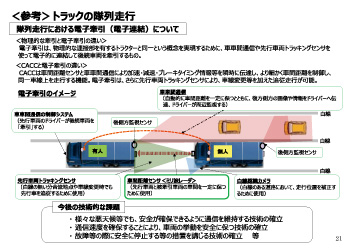 |
 |
Mr. Kenji Ueki,
Director of Autonomous Driving and ITS Promotion Office, Automobile
Division, Manufacturing Industries Bureau,
Ministry of Economy, Trade and Industry |
Next, Mr. Naohiko Ogihara, Director, Land Mobile Communications
Division, Radio Department, Telecommunications Bureau, Ministry of
Internal Affairs and Communications (MIC) gave a lecture entitled "Trends
and MIC's involvement towards the achievement of automated driving".
Firstly, from the aspect that Japan is "an advancing country in
challenging aging society, he mentioned utilization of automated driving
as its solution, an impact to the communication environment that the 5th
Generation Mobile Communications Systems (5G) brings about, the scenario
of spreading automated driving based on them, and expectation for
marketing Logistics services and mobility services. Then, he expounded the
demonstration project of research and development about communications
infrastructure of which the ministry takes responsibility toward promotion
of ITS, work on international standardization that also reflects the
outcome of the project, development of domestic institution that also
takes consideration of foreign trends, and international expansion of the
domestic outcome. In specific, while mentioning utilization of
communication that supports automated driving, and road-to-vehicle and
vehicle-to-vehicle communication technology that is going to be required
for realizing automated driving for the time being, he talked about tests
for providing institution in terms of communication regarding automated
driving that MIC works on, research and development of appropriate
collection and utilization of information needed according to the scale of
zone, and the demonstration of Japan's ITS radio system in India.
Furthermore, he explained evolution of the mobile communication systems,
advantages of 5G that is ultra-low latency and various changes it brings
about to the industrial society, actions of Japan, the United States,
China, Korea, and Europe for realizing 5G, allotment of frequency that MIC
is dealing with, 5G-related demonstration experiments including high speed
mobility and convoy travel of trucks, and other activities on which to
place weights in the future.
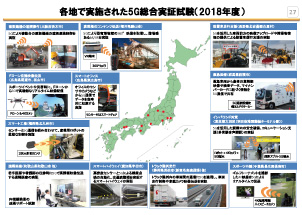 |
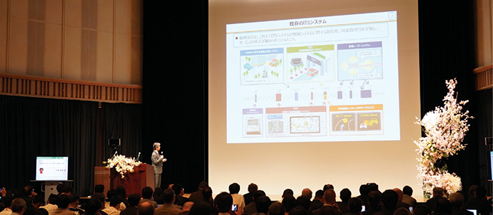 |
Mr. Naohiko
Ogihara, Director of Mobile Satellite Communications Division, Radio
Department, Telecommunications Bureau,
Ministry of Internal Affairs and Communications |
As the last speaker of the morning session, Mr. Katsuya Abe, Director,
ITS Policy and Program Office, Road Traffic Control Division, Road Bureau,
Ministry of Land, Infrastructure, Transport and Tourism (MLIT) gave a
special lecture "MLIT Road Bureau's involvement in automated driving". At
the beginning, he introduced some problems such as aging and population
decline of hilly and mountainous areas or decline of public
transportation, along with the various functions of "Michinoeki (roadside
stations)" to solve them. He said that these circumstances made the Bureau
pay attention to automated driving as a solution to the concerned area,
and that how they became to get involved in demonstration based in
multiple "Michinoeki (roadside stations)". He also described the social
experiments of automated driving services carried out as part of it with
the budget aid of SIP support using video. He then explained that there
were cases of manual intervention and stopping during automated driving
performed based on these experiments. He detailed the causes of these
cases and analysis of problems on the side of infrastructure,
acceptability research for the users of the automated driving vehicles,
and so on. Moreover, he described the aims of introducing automated
driving vehicles to compensate public transport, its profitability as a
business model by the paid volunteers who utilize the system of onerous
passenger transportation with private vehicles, and efforts on the
standpoint of infrastructure through "the study meeting on the road space
supporting automated driving". Finally, he also mentioned the ongoing
efforts including: 1) Advancement of the snow plow truck in consideration
of automated driving, 2) Supporting automated driving by providing
information at the merging section of expressway, 3) Providing read-ahead
information, 4) Collecting of three-dimensional (3D) data by the
in-vehicle sensing technology in connection with dynamic map, and 5)
Generating and providing road traffic information at the lane level.
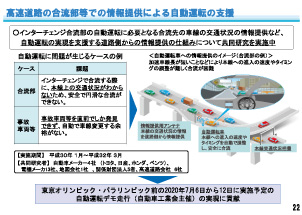 |
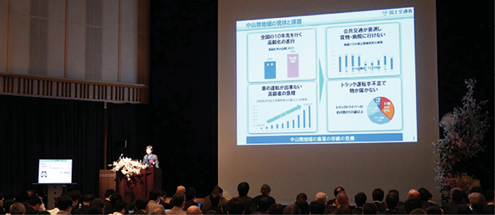 |
Mr. Katsuya Abe,
Chief of ITS Policy and Program Office, Road Traffic Management
Office, Road Bureau,
Ministry of Land, Infrastructure, Transport and Tourism |
From the afternoon, Mr. Keiji Furuya, member of the House of
Representatives (and President of ”Parliamentary group for considering
Automobile Culture” and so on) gave a guest greeting. Based on his own
experience, he emphasized the importance of collaboration among the
concerned ministries and agencies towards realizing automated driving,
expectation of spreading 5G all over the nation, and advantages of putting
automated driving to practical use especially in the depopulated
countryside. Furthermore, he mentioned 5 important points for these: 1)
Technological development, 2) Infrastructure Improvement, 3) Stipulating
rules including international rules, 4) Building up environment for
positive use in the society, and 5) Public-private collaboration.
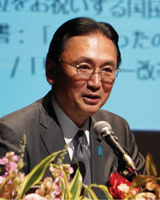 |
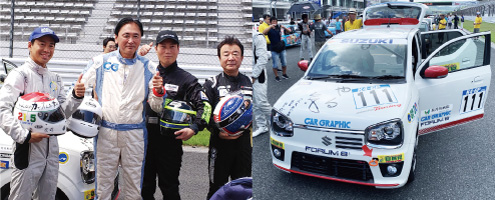 |
Mr. Keiji Furuya, President of
"Parliamentary group for considering Automobile Culture" / Member of
the House of Representatives
FORUM8 sponsored K4-GP (August 13,
2019). |
The afternoon session started with Mr. Takahiro Hirasawa, Director of
Automated Driving Strategy Office, Engineering Policy Division, Road
Transport Bureau, Ministry of Land, Infrastructure, Transport and Tourism
(MLIT), giving a special lecture entitled "Activities related to automated
driving in the automotive field". First, he summarized the significance of
automated driving, the goals of the whole government based on
Public-Private ITS Initiative/Roadmaps, and activities to achieve them
made by collaboration among industry, government and academia. Then, as
the action of MLIT, he outlined three central points that Autonomous
Driving Strategy Headquarters (established in 2016) holds up towards
realization of automated driving: 1) Environmental arrangement such as
standards, liability, and the three-dimensional geographical spatial
information infrastructure, 2) Development and promotion of automated
driving technologies such as vehicle-to-vehicle or vehicle-to-road
coordination, 3) Automated driving services such as Last Mile or "the
Michinoeki (roadside stations)", demonstration / social validation of
convoy traveling of trucks etc. He also explained the following items in
detail. 1) Main points of the latest version of "Safety technology
guideline of autonomous vehicles", 2) Partial revision of "Road Transport
Vehicle Act" (established in May 2019), 3) List of matters of priority to
consider to prepare international standards for autonomous vehicles
(agreed in The UNECE World Forum for Harmonization of Vehicle Regulations
(WP.29) of the United Nations in March 2019), 4) Examination of the method
for motor vehicle inspection using OBD: On-board diagnostics, 5)
"Guideline for passenger automobile transport business to secure safety
and convenience in the mobility service by automated driving within the
limited area" (formulated in June 2019), 6) Promotion of "safety support
car s", 7) Demanding estimate budget regarding automated driving
technologies for the 2020 fiscal year, and 8) Demonstration automated
driving regarding Last Mile automated driving or convoy traveling of
trucks.
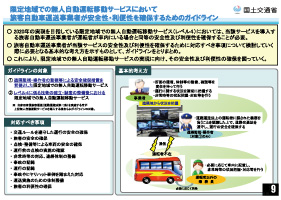 |
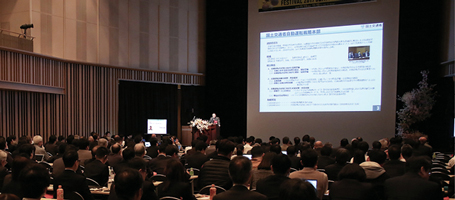 |
Mr. Takahiro
Hirasawa, Director of Autonomous Driving Strategy Office /
Engineering Policy Division Road Transport Bureau,
Ministry of Land, Infrastructure, Transport and Tourism |
The last special lecture for the Conference was "NPA's involvement in
automated driving" by Mr. Toshihiro Sugi, Director, Autonomous Driving
Planning Office, Traffic Planning Division, Traffic Bureau, National
Police Agency (NPA). As the background of the involvement, started to talk
about the change in the number of road accident fatalities, and the
characteristics of the share of the number of road accident fatalities by
situation and age group. He further talked about the levels of automation
of driving as its solution, and the flow for realizing the level 3 (2020)
and the level 4 (2025) on the expressways based on the road map of Japan.
He also mentioned expectation towards reduction of accidents and
mitigation of congestion, which are the effects to be brought about by
automated driving, as well as the concept of its early practical
application as the Agency. As a concrete action of the Agency, he
expounded the following items. 1) Environmental arrangement for
public-road demonstration tests based on "Guidelines for public road
demonstration of automated driving systems " (2016), "Standards for
handling application for permission to use roads regarding public-road
demonstration tests of the remote controlled automated driving system"
(2017), revision of the "Standards for admission to use roads regarding
demonstration tests of autonomous driving" (Sept. 2019); 2) Formulation of
traffic rules including driving operation and other obligation except
operation towards environmental arrangement on the level 3 aimed to be
fulfilled by 2020, based on the roadmap regulated in "Outline of system
development for automated driving systems" (April 2018); 3) Research and
development about provision of signaling information and V2X
(vehicle-to-everything) information through SIP, as well as research and
development for practical application of the automated driving system
including the demonstration tests in Tokyo Waterfront Areas; 4) Calling
for attention to the concerned people for securing safety in the process
of practical application of driving support systems (e.g. prevention of
overconfidence).
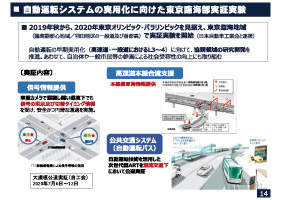 |
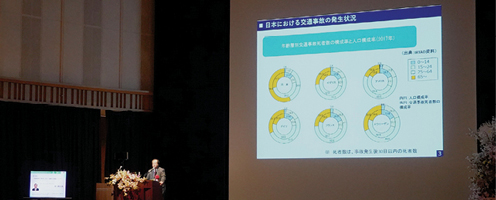 |
Mr. Toshihiro Sugi,
Director of Autonomous Driving Planning Office, Traffic Planning
Division, Traffic Bureau,
National Police Agency |
After these lectures, the first half of the morning session ended with
"the Virtual Reality Design Studio UC-win/Road Presentation" by FORUM8
staff. In the first part, entitled "Utilization and future vision of VR
for automated driving, ADAS, mobility R&D, and training", he summarized
the shift in solutions over the past year. He introduced the audience the
release of UC-win/Road Ver.14 (latest version), the new representation
function of UC-win/Road and link with various devices and technologies,
line up expansion of the DS, system recent development and application
cases of VR in and out of the nation. He also mentioned other matters such
as examples of the real-time environment system, expansion using a
Japan-made cross-platform game engine “Chidori”, AR solution, and Shade3D
Ver20. As the future prospects, he talked about support / expansion for
real-time environments or the latest device, performance optimization, as
well as extension for the open format.
| Japan-made cross-platform
game engine Chidori |
| ●FORUM8 takes over copyright of Japan-made game
engine Chidori● |
|
 |
 |
Example of a service using Chidori Engine
Sign language dictionaries to learn in games |
|
Finally, from the viewpoint of the person in charge of development, he
made a presentation entitled "New functions and new developments of
UC-win/Road". Using demonstration, he explained new functions of
"UC-win/Road Ver.14" (released in Nov 2019) about simulation link and
rendering, functions under development, the direction of future
development, and so on.
|
UC-win/Road Ver.14 New Functions |
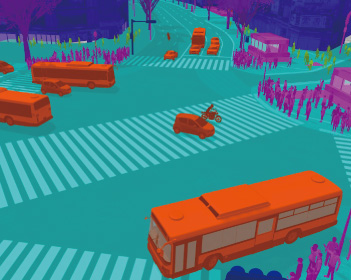 |
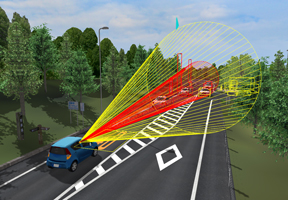 |
Shader customization
Segmentation by object selection |
Object Detectiopn Plug-in Option |
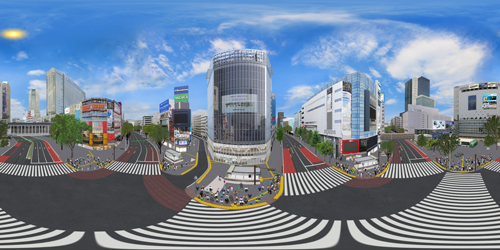 |
| Rendering of 360-degree image |
|
|

